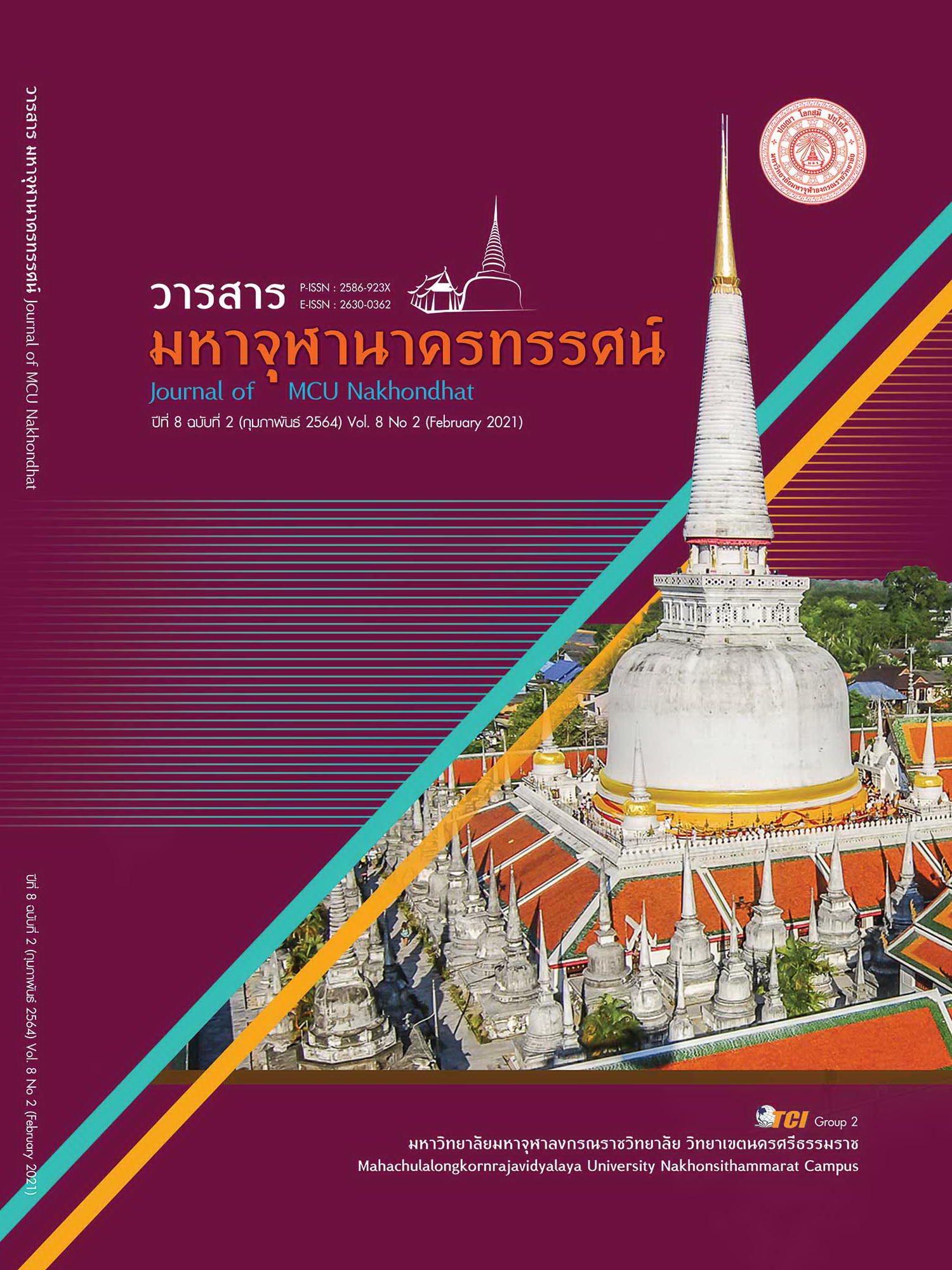LEADERSHIP AND ORGANIZATIONAL CULTURE AFFECTING THE QUALITY OF WORK LIFE OF TEACHERS OF WATLANBOON SCHOOL, LADKRABANG DISTRICT OFFICE, BANGKOK
Main Article Content
Abstract
The objectives of this research article were: 1) to study leadership and organizational culture affecting the quality of work life of teachers of Watlanboon school, Ladkrabang district office, Bangkok: and 2) to compare personal factor of teachers on factors of leadership and organizational culture affecting the quality of work life of teachers of Watlanboon school. The qualitative research by us the questionnaires. Select purposive sampling such as: teachers of Watlanboon school for all 80 persons. Using analyzed with frequency statistics, percentage, average, standard deviation, t - test and F - test tested independent. And assumptions and table layouts. The research found that: 1. leadership and organizational culture affecting the quality of work life of teachers include: 1) the leadership behavior Liberal leaders were the high mean ( = 3.55, S.D. = 0.88), the lowest were transformative leaders (
= 3.49, S.D. = 0.79), 2) the work of culture, the adjustment were the high mean (
= 3.60, S.D. = 0.88), the lowest was participation (
= 3.54, S.D. = 1.00), and 3) the quality of work and life a high level (
= 3.85, S.D. = 0.75) include: 1) Development of competence, 2) reasonable and fair compensation, 3) social integration, 4) work - life balance, 5) hygienic and safe environment, 6) Regulations, 7) Progress and stability, and 8) work in society. And 2. The comparison of factors by personal characteristics were classified by gender, age, education level, income, job position and work experience. The overall picture was not significantly different at the level .05. But in the leadership section of change, exchange leaders and cultures of gender disparities, and liberal leaders differing on monthly income, as well as a different culture of unity in their work experience.
Article Details
References
ทิมมิกา เครือเนตร. (2554). ภาวะผู้นํากับแรงจูงใจในการทำงานของพนักงานบริษัท ไทยฟู้ดส์กรุ๊ป จำกัด. ใน ดุษฎีนิพนธ์บริหารธุรกิจมหาบัณฑิต สาขาวิชาการบริหารธุรกิจ. มหาวิทยาลัยราชภัฎวไลยอลงกรณ์.
นาถนารี ชนะผล และคณะ. (2563). สภาพปัญหาและแนวทางการพัฒนาความเป็นองค์กรแห่งการเรียนรู้ของโรงเรียนมัธยมศึกษาขนาดใหญ่ในเขตพัฒนาพิเศษเฉพาะกิจ จังหวัดชายแดนภาคใต้. วารสารมหาจุฬานาครทรรศน์, 6(4), 1688-1709.
นิวัฒน์ รังสร้อย และพีระพงษ์ วรภัทร์ถิระกุล. (2563). การพัฒนาโครงสร้างพื้นฐานโดยใช้ความร่วมมือระหว่างภาครัฐและเอกชนในพื้นที่อำเภอบางบัวทอง จังหวัดนนทบุรี. วารสารมหาจุฬานาครทรรศน์, 7(10), 142-153.
บุญชม ศรีสะอาด. (2556). วิธีการทางสถิติสำหรับการวิจัย เล่ม 1. (พิมพ์ครั้งที่ 5). กรุงเทพมหานคร: สุวีริยาการพิมพ์.
พภัสสรณ์ วรภัทร์ถิระกุล. (2562). แรงจูงใจในการปฏิบัติงานของบุคลากรที่มีต่อการบริหารสำนักงานหลักประกันสุขภาพแห่งชาติ สาขาเขตพื้นที่ 13 (กรุงเทพมหานคร). วารสารมหาจุฬานาครทรรศน์, 6(1), 486-498.
ยุทธนา ขวัญเมือง และสุทธิพงษ์ ศรีวิชัย. (2563). การพัฒนานวัตกรรมการเสริมสร้างเยาวชนต้นแบบ ตามนโยบายปฏิรูปการศึกษาสำหรับนักเรียนระดับมัธยมศึกษา. วารสารมหาจุฬานาครทรรศน์, 6(4), 2079-2097.
โรงเรียนวัดลานบุญ. (2563). รายงานประเมินตนเอง ประจำปีการศึกษา 2562. กรุงเทพมหานคร: โรงเรียนวัดลานบุญ.
ศิวิไล กุลทรัพย์ศุทรา. (2552). แรงจูงใจในการปฏิบัติงานของพนักงานบริษัท เอ. เอส. แอสโซซิ เอท เอนยิเนียริ่ง (1964) จำกัด. ใน ดุษฎีนิพนธ์บริหารธุรกิจมหาบัณฑิต สาขาวิชา การจัดการทั่วไป. มหาวิทยาลัยราชภัฎพระนคร.
หทัยรัตน์ สกุลปัน. (2560). การศึกษาคุณภาพชีวิตในการทำงานของครูโรงเรียนเอกชน ในเครือมูลนิธิไทไชโย. ใน การประชุมวิชาการเสนอผลงานวิจัยระดับบัณฑิตศึกษา ครั้งที่ 2. มหาวิทยาลัยราชภัฏมหาสารคาม.
Cronbach, L. J. (1990). Essentials of psychological testing (5th ed.). New York: Harper Collins. Publishers.
Daniel, K. & Robert, L. K. (1966). The Social Psychology of Organization. New York: JohnWiley & Sons.
De Bono, Edward. (1970). Lateral thinking: creativity step by step. New York: Harper and.
Jackson, S. E. et al. (2009). Managing human resources. Mason, OH: South - Western Cengage Learning.
Krejcie, R. V. & Morgan, D. W. (1970). Determining Sample Size for Research Activities. Educational and Psychological Measurement, 30(3), 607-610.
Likert, R. (1967). The Method of Constructing and Attitude Scale. In Reading in Fishbeic, M. (Ed.), Attitude Theory and Measurement (pp. 90-95). New York: Wiley & Son.


